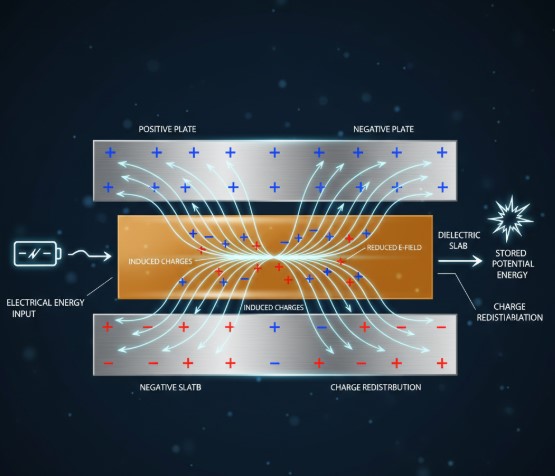The function codomain is a concept that often raises questions in mathematics. It’s not always immediately clear why we define a function with a codomain that might be larger than its actual output values. Let’s clarify this by understanding that the function codomain provides essential context. It is crucial for defining operations like function composition and for studying properties such as surjectivity. We’ll explore how the function codomain impacts the behavior and applications of functions, ensuring a solid grasp of this fundamental idea.
Table of Contents
More from me
In mathematics, a function is defined by its domain, codomain, and a rule that maps each element from the domain to an element in the codomain. The concept of a function’s codomain is fundamental, yet often misunderstood. Let’s explore what a codomain is and why it’s essential in defining functions, particularly when considering collections of functions and their compositional structure. Understanding the codomain is crucial for grasping the full scope of function theory.
Many struggle with the idea that not all functions are surjective. A surjective function, also known as an onto function, is one where every element of the codomain is the image of at least one element from the domain. The codomain is not automatically equal to the image, and this distinction is critical. We will explore why this is the case and how it affects the properties and applications of functions. The concept of a function’s codomain is fundamental.
Defining the Function Codomain
The codomain of a function is a set that contains all possible output values of the function. It’s part of the function’s definition, alongside the domain and the mapping rule. Unlike the image (or range), which consists only of the actual output values, the codomain can be larger. For example, consider a function ##f: \mathbb{R} \rightarrow \mathbb{R}## defined by ##f(x) = x^2##. Here, the codomain is all real numbers, even though the image is only non-negative real numbers.
The codomain is essential because it specifies the set within which the function’s output must lie. This is particularly important when dealing with collections of functions. The codomain allows us to define operations like composition, where the output of one function becomes the input of another. Without a well-defined codomain, these operations would be ambiguous or even impossible. Therefore, the function codomain plays a crucial role in mathematical structures.
The Importance of Function Composition
Function composition is a fundamental operation in mathematics. Given two functions ##f: X \rightarrow Y## and ##g: Y \rightarrow Z##, their composition ##g \circ f## is a function from ##X## to ##Z##. The codomain of ##f## must match the domain of ##g## for the composition to be defined. This compositional structure is vital in many areas of mathematics, including algebra, calculus, and analysis.
Requiring all functions to be surjective would severely limit the compositional structure. If ##f## were required to be surjective, then ##Y## would have to be exactly the image of ##f##. This constraint would make it difficult to compose functions freely, as the domain of ##g## would always need to match the exact image of ##f##. By allowing functions to have a codomain larger than their image, we maintain flexibility and generality in mathematical operations. Therefore, function composition is a vital aspect.
Functions and Dynamical Systems
In dynamical systems, a function ##f: X \rightarrow X## is used to model the evolution of a system over time. The sequence ##{x, f(x), f^2(x), f^3(x), …}## describes the state of the system at different points in time. The properties of this sequence, such as its stability and periodicity, depend on whether ##f## is surjective. The function codomain helps us understand the behavior of these sequences.
If we were to insist that the domain and codomain of ##f## are different simply because the range and codomain aren’t equal, we would lose important information about the system’s dynamics. The codomain provides a context for understanding the long-term behavior of the system, even if the function is not surjective. The function codomain, therefore, is crucial for understanding the system’s evolution.
Formal Definition of a Function
A function can be formally defined as a triple ##(A, B, S)##, where ##A## is the domain, ##B## is the codomain, and ##S## is a subset of ##A \times B## such that for every ##a \in A##, there exists a unique ##b \in B## with ##(a, b) \in S##. This definition emphasizes that the codomain is an integral part of the function’s definition. Without specifying the codomain, the function is not fully defined. The function codomain is thus a key component.
Consider two functions, ##f = (\mathbb{R}, \mathbb{R}, {(x, x^2) : x \in \mathbb{R}})## and ##g = (\mathbb{R}, [0, \infty), {(x, x^2) : x \in \mathbb{R}})##. Although ##f(x) = g(x)## for all ##x## in their domain, ##f \neq g## because they have different codomains. The function ##g## is surjective, while ##f## is not. This distinction highlights the importance of the codomain in distinguishing between functions. The function codomain thus changes the function itself.
Why Codomain Matters
The codomain is not just an arbitrary set containing the image; it is a fundamental part of the function’s definition. It provides a context for understanding the function’s behavior and its relationship to other functions. The codomain allows us to define operations like composition and to study properties like surjectivity. The function codomain helps us understand the function.
When dealing with inverse functions, the codomain becomes even more critical. If a function ##f: X \rightarrow Y## is not surjective, then its inverse ##f^{-1}## is only defined on the image of ##f##. By specifying the codomain, we can avoid undefined operations and ensure that our mathematical reasoning is sound. The function codomain thus ensures mathematical rigor.
Similar Problems
Problem 1: Define a function ##f: \mathbb{Z} \rightarrow \mathbb{Z}## such that ##f(x) = 2x##. Is this function surjective?
Solution: No, because not every integer is an even number.
Problem 2: Define a function ##g: \mathbb{R} \rightarrow [0, \infty)## such that ##g(x) = x^2##. Is this function surjective?
Solution: Yes, because every non-negative real number has a real square root.
Problem 3: Define a function ##h: \mathbb{N} \rightarrow \mathbb{N}## such that ##h(x) = x + 1##. Is this function surjective?
Solution: No, because there is no natural number that maps to 1.
Problem 4: Define a function ##k: \mathbb{R} \rightarrow \mathbb{R}## such that ##k(x) = e^x##. Is this function surjective?
Solution: No, because the image of ##k## is only positive real numbers.
Problem 5: Define a function ##l: A \rightarrow A## where ##A = {1, 2, 3}## and ##l(1) = 2, l(2) = 3, l(3) = 1##. Is this function surjective?
Solution: Yes, because every element in ##A## is mapped to by some element in ##A##.
| Concept | Description | Importance of Function Codomain |
|---|---|---|
| Codomain | The set that contains all possible output values of a function. | Provides a context for understanding the function’s behavior. |
| Image (Range) | The set of actual output values of a function. | A subset of the codomain. |
| Surjective Function | A function where every element of the codomain is the image of at least one element from the domain. | Not all functions are surjective, and the codomain allows us to distinguish between surjective and non-surjective functions. |
| Function Composition | An operation where the output of one function becomes the input of another. | The codomain of the first function must match the domain of the second function for composition to be defined. |
| Formal Definition of a Function | A function is a triple ##(A, B, S)##, where ##A## is the domain, ##B## is the codomain, and ##S## is a set of ordered pairs. | Emphasizes that the codomain is an integral part of the function’s definition. |
We also Published
RESOURCES
- Codomain – Wikipedia
- I don’t understand the notion of a codomain : r/learnmath
- Domain, Range and Codomain
- Is the Codomain of a function always All Real Numbers? If not, how …
- terminology – Domain, Co-Domain & Range of a Function …
- How to write a two line function definition? (With domain/codomain …
- Why does an inverse function’s range have to be its entire codomain …
- Domain Range and Codomain Of A Function
- Why co-domain of a function needs to be defined beyond the …
- Functions








0 Comments